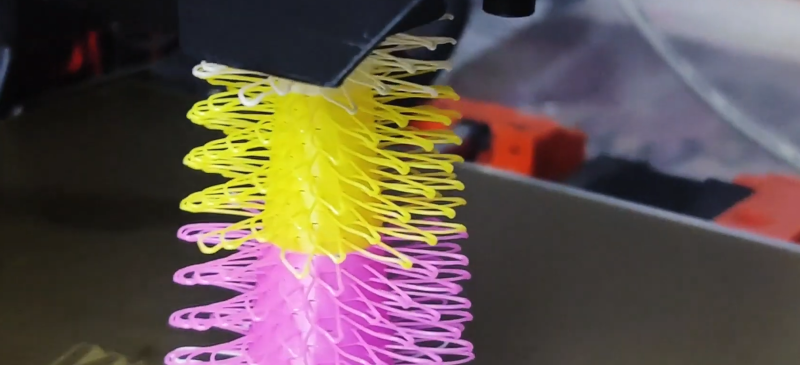We all love 3D printing, but printing anything that has an overhang requires support, right? Maybe not. [Create Inc] has a video showing some 3D prints that seem to hang impossibly in the air — not bridges, but loops just floating in the air. You can see the effect in the video below.
The first part of the post covers gcode basics. Around the 5:30 mark, [Create] talks about his inspiration: FullControl Gcode Designer. You can do a lot with this tool and it inspired [Create’s] similar web-based version.
The point of these tools is to make it easier to create gcode directly instead of using a slicer. You can think of it as assembly language for 3D printing — you can do almost everything in the high-level language — 3D models — but if you want ultimate control you use assembly language, or, in this case, gcode.
The original tool uses Excel which didn’t visualize the output directly and could not provide proper error checking. The new tool solves those problems and is much easier to use.
If you know gcode, you can do a lot of interesting things. You can even put a spring in your step.
















So the trick to print in mid air with Cura is to move slow and 100% fan?
There’s more than just that the tool can do Alice. You can do non planar bridges, for example. There are other creative things that can be done by having control over every line of your print. Hope you liked the video
Reminds me of a guy I knew who used to write his documents directly in PostScript and send that file to the printer.
Okay now I want to learn how PostScript works.
It’s a lot like Forth.
Many moons ago I had a sub-1k fractal generator that made the printer’s CPU do all the heavy lifting.
In the late 1980s, when you had a PostScript printer connected to your Unix box, and your “word processor” was vi or emacs, what else could you do?
Yes, I know, the alternative was to write a PostScript program which ran an Epson line printer emulation. After uploading the emulator to the printer, it would be as dumb as an average dot matrix needle printer and you could send plain ASCII texts to the printer. Yes, PostScript is, unlike Gcode, a full-featured Turing-complete programming language.
In any case, your only chance was to know PostScript, or have a colleague who knew.
Very impressive. Great video. I like the positive comments section at the end of the video.
Thanks a lot Mike.
I am glad you took the time to comment :-)
Love the software – hate the music and the too-quiet narration. It’s like being on hold while someone is talking.
Very heavy on higher math skills for the average 3D printer. Very powerful! And similar to many machining g-code tools. Can you incorporate more of a conversational programming? Similar to a Linux-CNC add-on python script for pocket milling or bolt hole patterns. But made to extrude instead of mill/turn.
I can look into it. I’m not very familiar with linux cnc but sounds like something that would be helpful towards what I’m trying to do